Transit Usability Study Results:
Project Description:

The Rehabilitation Engineering Research Center on Accessible Public Transportation conducted a global online survey of usability problems on public transit buses. The study investigated getting on and off public buses, circulating inside them, understanding their communication and information systems, as well as issues concerning rider safety. The information collected from this study will help identify public bus features that merit further detailed experimental research in controlled settings. The survey targeted a wide range of stakeholders including: manufacturers, designers, engineers, researchers, and riders (of all abilities).
Not only were we interested in learning about the problems users encounter on public buses, but also in gathering (1) “excellent examples” of accessible public transportation in cities participants have visited and (2) what they envision for the bus of the future.
Research Questions:
- Which features related to using public buses merit future detailed experimental research?
- What/where do users identify as accessible public transportation best practices?
- Which features need to be addressed when designing the next generation accessible transit bus
Data Collection:
Data was collected online using the survey tool survey monkey. The survey was available from September 2010-April 2011 through both the udeworld.com and rercapt.org websites. A total of 372 individuals responded.
Key Demographic Information (n = 372)

Ability to perform routine activities
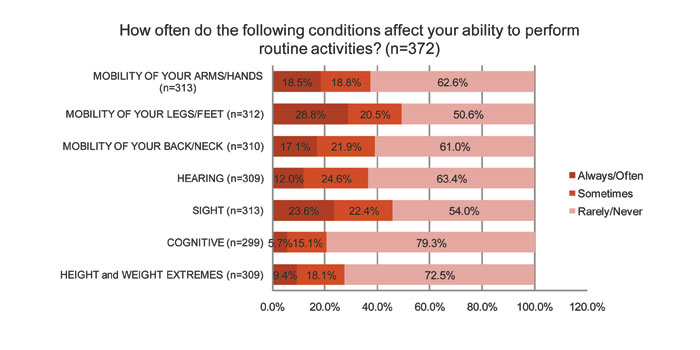
Ability to perform routine activities

* The following survey findings only reflect participant responses that yielded results greater than 10%.
Boarding and Dissembarking
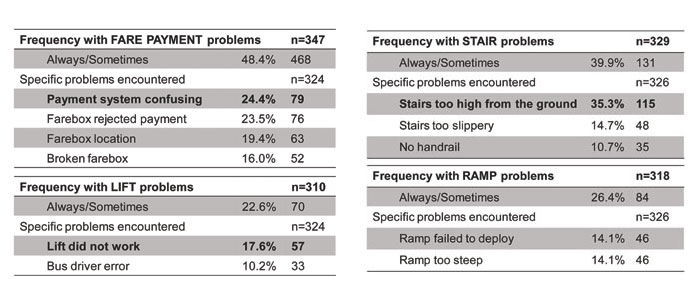
Ability to perform routine activities

Interior Circulation

Communication and Information Systems
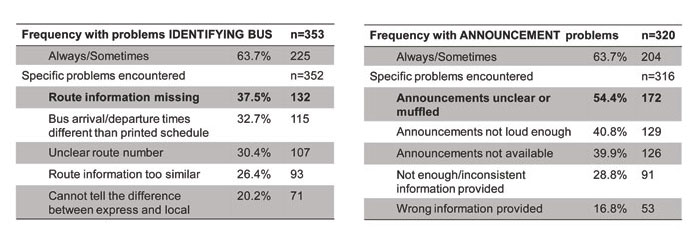
On Board Safety
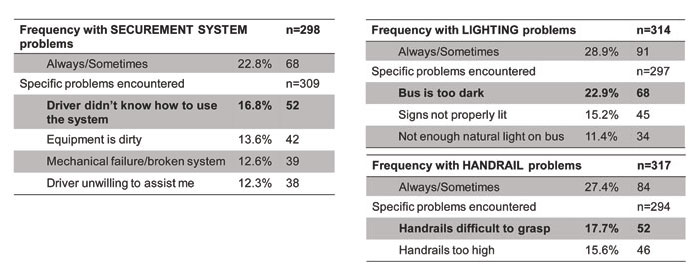
Response Summary

“Excellent Examples” of Accessible Public Transportation (n=166)
Below is a ranking of cities which, based on our results, provide quality public transportation.

Bus of the Future (n=209)
“In the year 2030, what design features do you envision for the next generation of accessible public buses…?” The chart below depicts survey participants’ collective vision for suggested improvements and ideas for the future.
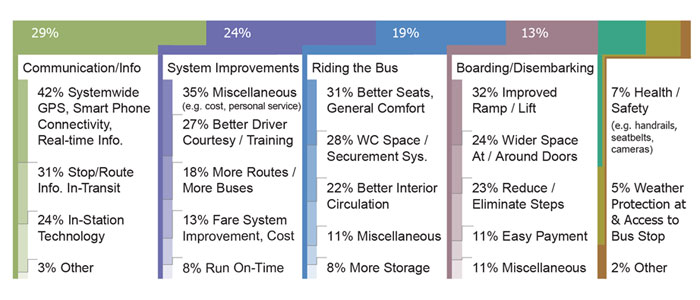
Acknowledgements:
This project is supported with a grant provided by the U.S. Department of Education, National Institute on Disability and Rehabilitation Research (NIDRR) through the Rehabilitation Engineering Research Center on Accessible Public Transportation (RERC-APT) (Grant# H133E080019), a partnership between The Robotics Institute at Carnegie Mellon University and The Center for Inclusive Design and Environmental Access at The University at Buffalo.
